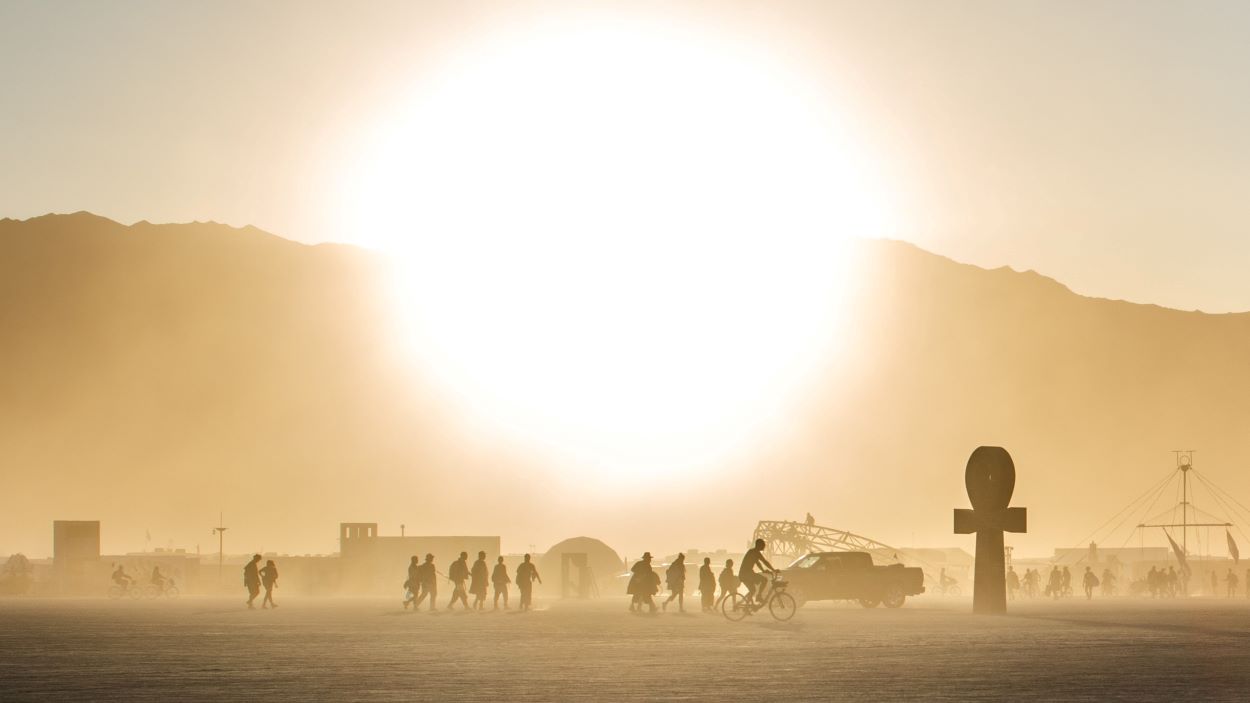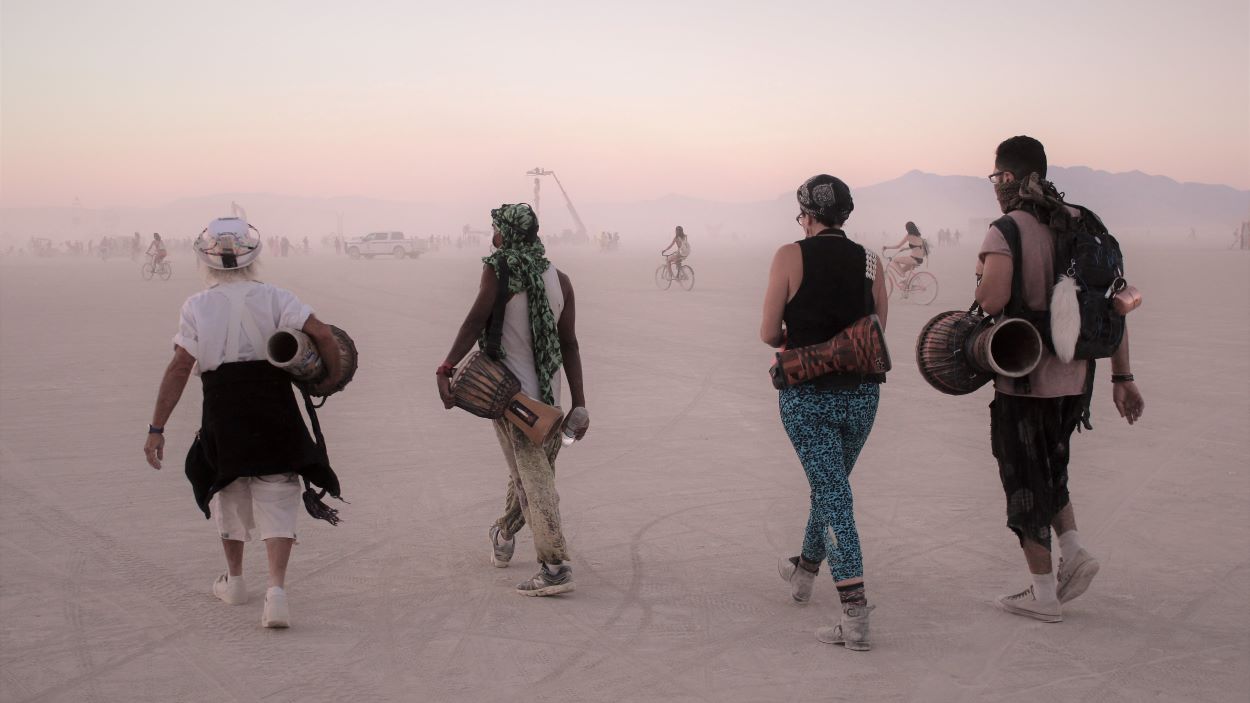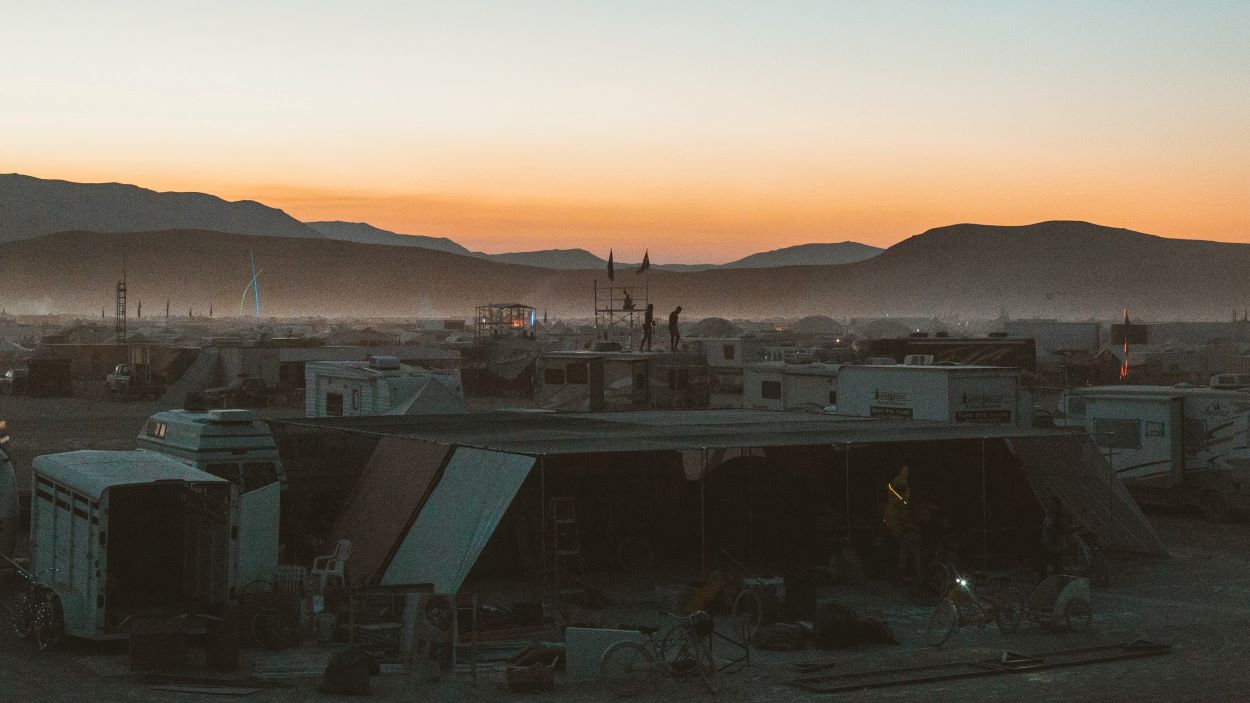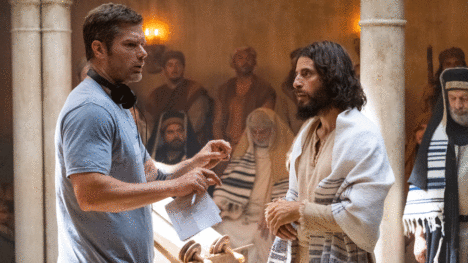Why would you go to Burning Man?
September 15, 2022

Black Rock Desert in Nevada, United States is an arid place. The flat, dry lake bed is so large and remote that it was the location of a successful land speed record attempt in 1997; a 1227km/h record that still stands today. Aside from a few experimental rocket launches, however, the desert is largely abandoned.
That is, until more than 78,000 music ravers turn up each year and erect “Black Rock City”—a makeshift community comprised of tents and camping gear in the middle of the desert. The attendees—often described as “bohemians” and “free spirits”—then set about creating and erecting large-scale sculptures and pieces of art while also partying to music from some of the world’s best-known DJs. The whole event is known as “Burning Man”—starting in 1986 on Baker Beach, San Francisco, before moving to the desert in 1991 (a choice the organisers of Australia’s Splendour in the Grass might be wise to learn from). This year, the festival took place from Sunday, August 28 to Monday, September 5.
On the Saturday evening, attendees set fire to an enormous effigy they’ve created based on the theme for that year’s festival. Past events have included themes like “Fertility 2.0” in 2012 and “Cargo Cult” in 2013; while this year’s edition is entitled “Waking Dreams”. Despite the “burning man” appearing to draw inspiration from ancient “wicker man” pagan rituals run by Celtic druids (which some historians argue was used for human sacrifice), the whole event has nonetheless captured widespread public imagination. As crowd numbers have increased over the years, so has the presence of celebrities and social media “influencers” who are seen participating in the festival’s rituals.

Yearning to worship
One might wonder what the appeal is for the thousands who gather at the festival. Organisers promote countercultural values throughout the weekend like “radical inclusion”, “radical self-reliance” and “radical self-expression”, as well as the importance for each attendee to be ecologically conscious and make sure no trace is left after the festival ends. While festival organisers have stated that structures like the Black Rock City Temple are a “neutral, non-denominational spiritual space”, the influence of an amalgamation of religious practices is undeniable.
Festival organisers went as far as to announce their intention for the festival to become its own religious rite. In a 2016 blog post on the Burning Man Project website, they wrote: “Beyond the dogmas, creeds and metaphysical ideas of religion, there is immediate experience. It is from this primal world that faith arises. In 2017, we will invite participants to create interactive rites, ritual processions, elaborate images, shrines, icons, temples and visions.
“The human urge to make events, objects, actions and personalities sacred is protean,” the statement concludes.
Basically, a core tenet of the festival is the human need to “worship” something bigger than ourselves— even if that thing is a 30-metre-tall burning structure. While not strictly speaking a new idea—some mature readers may be reminded of the countercultural Woodstock festival and other similar events from the past century—the idea has surprisingly ancient origins.

Burning bushes and broken tablets
It was in Sinai Desert that another group of people, the Israelites, were also conflicted about who they worshipped. They had just been delivered from oppression in Egypt and were heading to a land promised to be “flowing with milk and honey” (Exodus 3:8). The large group was under the leadership of Moses, who had been instructed by God in the form of a burning bush to lead the Israelites to freedom.
Just as numerous publications have suggested events like Burning Man are a haven for both religious and non-religious people seeking enlightenment and spiritual experience, so the Israelites yearned for the same during their decades spent trudging through the desert. God saw this need and responded in kind by instructing Moses about social structure for the Israelites (the Ten Commandments found in Exodus 20) and a way to worship Him that paralleled God’s sanctuary in heaven (see the Tabernacle and burnt offering rituals found in Exodus 26 and 27).
But the Israelites were impatient. With their leader Moses missing atop of Mount Sinai, they took matters into their own hands and created a golden calf statue as a monument to the “gods”. The Bible goes on to describe how they “sacrificed burnt offerings and presented fellowship offerings . . . and got up to indulge in revelry” (Exodus 32:6). While the Israelites’ behaviour was an insult to the God who had delivered them from oppression and continued to provide for them, it’s not dissimilar to a need that many of us have today, even leading tens of thousands out into Black Rock Desert. It’s the need to worship.
Some may see “worship” through the form of statues, icons or pictures, but at its core most people ultimately crave an experience with a higher power. There’s a desire for human existence on earth to have meaning beyond life and death.
That’s not to say statues or symbols are always inherently “evil” or allude to pagan rituals with a dark past. God also used symbols, and some have withstood the ages and are an important part of the modern world.

Serpentine salvation
Have you ever seen an image of a snake wrapped around a stick in places like the World Health Organisation? Some attribute the origins of this symbol to Greek mythology, but the truth is this symbol stems from a historical event. Numbers 21 describes a time when God sent snakes to bite Israelites who were complaining and doubtful. He then instructed Moses to construct a bronze snake and put it on a pole; anyone who had been bitten and looked at the statue would survive. The image has since endeared as a symbol of healing and is often used in the medical world.
Or there’s the statue that appeared in a dream to King Nebuchadnezzar and was interpreted by his servant Daniel. Most Bible scholars now agree that the statue, and the many materials from which it was comprised, accurately predicted historical kingdoms right through to the modern-day.
But, just as it was for the Israelites, for every symbol that God created there are more that humans abused. King Nebuchadnezzar, threatened by the dream and the notion that his Babylonian Empire would one day come to an end, “made an image of gold, ninety feet high and nine feet wide . . . He then summoned the satraps, prefects, governors, advisers, treasurers, judges, magistrates and all the other provincial officials to come to the dedication of the image he had set up” (Daniel 3:1,2). What God had intended as a symbol of His guidance throughout earth’s history became a symbol for the complete opposite—a selfish desire for power. How often are symbols around us used to the same effect?
When God created a social structure for the Israelites, and indeed the rest of humanity to abide by, one of the laws was to “not make for yourself an idol in the form of anything in heaven above or on the earth beneath or in the waters below. You shall not bow down to worship them; for I, the Lord your God, am a jealous God” (Exodus 20:4,5). While God used statues and idols to communicate a point; he simultaneously denounced anyone creating their own, even if some are made with good intentions.
The man who was raised
Symbols like the cross on which Jesus died are a powerful reminder of His sacrifice for everyone on the planet to be free from the burden of sin. At the same time, God doesn’t require wearing a replica of the cross to know that we accept His sacrifice and pledge our allegiance to Him. Instead, He tells us it’s as simple as “Everyone who calls on the name of the Lord will be saved” (Acts 2:21). Finding spiritual fulfilment, meaning and purpose doesn’t have to be found during a few days in a desert—it’s something we can experience every day. The Bible describes this union as “I [God] am the vine; you are the branches. If you remain in me and I in you, you will bear much fruit; apart from me you can do nothing” (John 15:5). Far from travelling out to the Nevada desert, you can invite God into your life and experience life with Him by praying. Don’t stress too much about what you should say—just talk to God as if He’s your friend.
If you’d like to get to know Him better, why not sign up to a free course, Try Jesus, at discover.hopechannel.com/try-Jesus
Daniel Kuberek is a former assistant editor for Signs of the Times magazine. He currently works in the Australian film industry.





